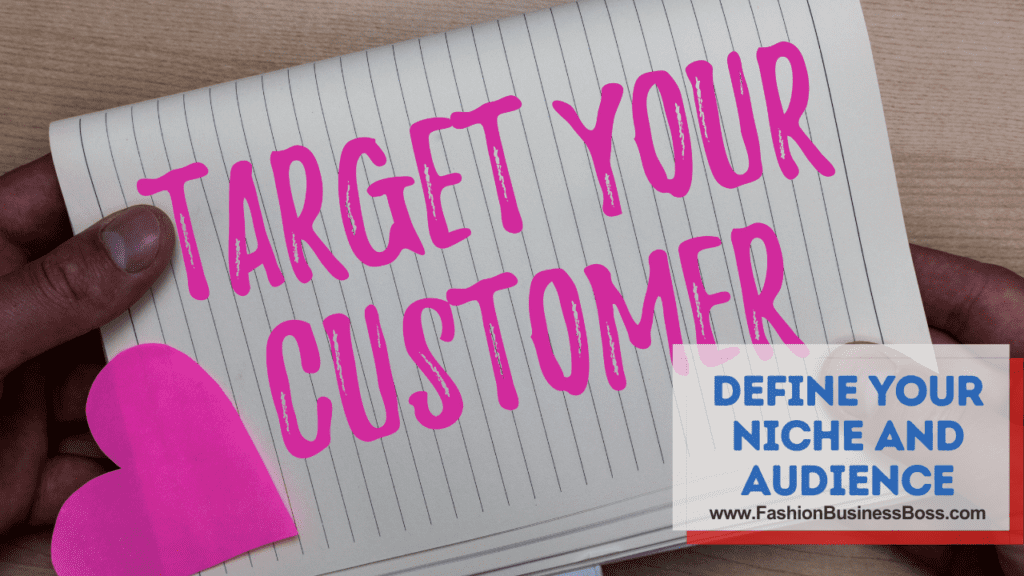Welcome, fashion enthusiast, to the exciting world of e-commerce! Starting an online store is an excellent way to make your mark in the fashion industry.
To create a clothing e-commerce site, choose a niche, select a domain, use an e-commerce platform, design it stylishly, list products effectively, set up secure payments, and market your fashion brand.
In this article, we’ll walk you through the process of building a website to sell clothes, helping you turn your fashion-forward ideas into a thriving online business.
Define Your Niche and Audience

Before you delve into the technical intricacies of building your clothing website, it’s pivotal to pinpoint your specific area of interest and the target audience you aim to serve. Consider what type of clothing you intend to offer and who your ideal customers are. Are you focusing on vintage fashion, sustainable clothing, or contemporary streetwear? Understanding your niche and audience serves as the cornerstone of your online clothing venture.
Why is this step so critical? Well, it lays the groundwork for your entire clothing business. Identifying your niche helps you determine what types of clothes to feature on your website and how to present them effectively. Your audience, on the other hand, plays a central role in shaping your branding and communication strategies. Think of it as choosing the theme for your clothing store and specifying the people you want to cater to. This initial clarity will serve as your guiding light as you proceed with the process of creating a compelling website for selling clothes.
Read more about: How to Make Your Own Custom Clothes: Sewing Chic and Unique
Choose a Domain Name and Hosting
Selecting the right domain name is similar to picking out the ideal outfit for a special occasion. Just as you’d choose an outfit that represents your style, your domain name should mirror your brand identity and be easy for people to remember.
Once you’ve settled on a name that encapsulates your brand, you need to register it with a trustworthy domain registrar. Think of this step as formally reserving your chosen name, making it exclusively yours in the online world.
Now, let’s talk about web hosting. Imagine it as the reliable engine that keeps your car running smoothly. In this case, your website is your vehicle to showcase and sell clothes. A dependable web hosting provider ensures that your website functions efficiently without glitches, downtime, or slow loading times. It’s the technical backbone that makes your online presence possible.
Hence, this step involves giving your online store a unique identity through your domain name and ensuring that it operates seamlessly by choosing a dependable web hosting provider.
Select an E-Commerce Platform
Now, let’s focus on selecting the software that powers your online clothing store. Think of this as choosing the operating system for your computer—it’s the foundation on which everything else will run smoothly.
There are several e-commerce platforms available, such as Shopify, WooCommerce, and BigCommerce. Each of these platforms has its own unique strengths and features. It’s essential to evaluate these options and select the one that best fits your specific needs and budget.
These e-commerce platforms are like toolkits designed to make your life easier. They come with user-friendly interfaces that simplify the process of setting up and managing your online store. They also offer customizable templates that serve as the design blueprint for your website. By using these templates, you can create an appealing and functional online store that suits your clothing business.
This step involves choosing the e-commerce platform that will serve as the backbone of your online clothing store. It’s akin to selecting the operating system for your computer, so make sure to pick the one that aligns with your requirements and budget.
Design Your Website

Now, let’s focus on shaping the look and feel of your online clothing store. Imagine your website as the digital equivalent of a physical storefront. Just as a well-arranged window display attracts passersby, an appealing website design draws in online visitors.
The first thing to consider is visual appeal. Think of this as the exterior design of a brick-and-mortar store. It’s the first impression that visitors get. Select a clean and modern design that aligns with your brand’s identity. Ensure that it’s easy to navigate, like a well-organized store layout.
Next, consider mobile responsiveness. This means your website should work smoothly on smartphones and tablets, just as it does on desktop computers. In our digital age, many people shop using mobile devices, so it’s crucial to cater to this audience.
Now, let’s talk about product presentation. High-quality images and engaging product descriptions are like the attractive window displays inside your store. They help customers understand your clothing items better and make informed choices.
This step involves crafting a visually appealing and user-friendly website that showcases your clothing products effectively. Just like a well-designed physical storefront, your website’s design plays a crucial role in attracting and retaining customers.
Read more about: How to Make Your Own Clothes: Crafting Wearable Art
Set Up Product Listings
In this step, we’ll focus on the heart of your online clothing store—the product listings. Imagine them as the neatly arranged shelves in a physical store, showcasing your merchandise.
For each clothing item you intend to sell, create a detailed product listing. Think of this as providing a thorough product description to your customers. Include essential information like size, color, material, and care instructions. This information helps potential buyers understand what they’re getting and how to take care of it.
Visuals are crucial too. Just as you’d want to see a product up close before buying it in a physical store, high-resolution images from various angles are essential. These images give customers a clear view of the clothing item, allowing them to make informed decisions.
Lastly, consider your checkout process. Make it secure and straightforward, similar to a quick and hassle-free payment counter in a brick-and-mortar store. An easy and secure checkout process enhances the user experience, encouraging customers to complete their purchases.
Implement Payment and Shipping Solutions
In this step, we’ll look at the practical aspects of running your online clothing store—accepting payments and getting products to your customers.
First, you need to integrate payment gateways. Think of these as the cash registers at a physical store. They allow you to securely accept payments from your customers. Popular options include PayPal, Stripe, or Square. These platforms ensure that customer payments are processed safely.
Next, consider shipping solutions. Just like deciding how to deliver products from a physical store to customers’ homes, you’ll need to determine shipping options and rates. This depends on your location and your target audience’s location. Offering various shipping methods, such as standard and expedited shipping, gives customers choices and can boost their satisfaction.
Lastly, clear shipping policies are vital. They serve as the rules and regulations for getting products into the hands of your customers. Transparent and straightforward policies build trust and help customers know what to expect when it comes to delivery times, costs, and return options.
Develop a Marketing Strategy

Now, let’s talk about how to get the word out about your online clothing store. Marketing is like spreading the news about your store’s grand opening in the digital world.
To attract customers, you need a solid marketing strategy. Think of this as your plan for letting people know that your store exists. Utilize social media platforms, such as Facebook, Instagram, and Twitter. These are like bulletin boards where you can showcase your clothing and connect with potential customers.
Email marketing is another tool in your marketing toolbox. It’s like sending out invitations to a special sale. Email newsletters can keep your customers updated about your latest arrivals and promotions.
Search engine optimization (SEO) is akin to placing signposts that help people find your store. It involves optimizing your website content so that it ranks higher in search engine results when someone looks for clothing items you offer.
Consistency in your branding—like having a recognizable logo and color scheme—and engaging content, such as blog posts or videos about fashion tips, will help you stand out in the competitive online fashion world.
Read more about: How to Make Your Mark in Fashion: Starting a Clothing Line
Ensure Security and Privacy
In the online world, ensuring the safety and privacy of your customers’ information is absolutely essential. Think of it like locking the doors and windows of your physical store to keep it safe.
First and foremost, you need to protect your customers’ data. This is as crucial as keeping sensitive information locked in a secure vault. To do this, use SSL certificates and encryption. They work together to make sure that any information shared on your website, such as payment details, is kept private and secure.
Furthermore, you should have a clear privacy policy. This is similar to having rules posted in your physical store, letting customers know how their information will be used and protected. When customers trust that their data is safe with you, it builds confidence, which is key in the online world.
Monitor and Optimize
After launching your website, it’s crucial to keep a watchful eye on how it’s doing. Imagine it’s like driving a car; you need to check the dashboard to make sure everything’s running smoothly.
To do this, use analytics tools. These tools are like your dashboard for your website. They help you see how many people are visiting, what they’re doing on your site, and how many are making purchases.
By keeping an eye on these numbers, you can make informed decisions. For instance, if you see that many people visit your site but don’t buy anything, you might need to tweak your product descriptions or pricing. It’s like adjusting your route when you notice traffic on the road.
Continuously adjusting and improving your website based on this data is the key. It’s similar to taking detours to avoid traffic jams, making your journey (and your customers’ experiences) smoother.
Provide Exceptional Customer Service

In the online world, providing excellent customer service is like offering a warm welcome and friendly assistance in a physical store. It can truly make your online store stand out.
First and foremost, it’s important to respond quickly to customer inquiries. Think of it as being readily available to answer questions, just like having store staff available to assist shoppers. Prompt responses show that you care about your customers’ needs.
Offering hassle-free returns is another important aspect of exceptional service. This is akin to having a generous return policy in a physical store. It gives your customers peace of mind, knowing they can easily return items if they’re not satisfied.
Lastly, seeking feedback from your customers is valuable. It’s like asking shoppers about their experience in your physical store. Feedback helps you understand what you’re doing well and where you can improve, ultimately enhancing the shopping experience for your customers.
Read more about: How to Make Clothes to Sell: Fashion Your Dreams
Conclusion
Creating a website to sell clothes is an exciting venture that allows you to share your passion for fashion with the world. By following these steps and staying dedicated to your brand, you can build a clothing e-commerce website that attracts customers and helps you achieve your business goals. Remember, fashion is about expressing yourself, so let your unique style shine through in every aspect of your online store.
Frequently Asked Questions

Q: How can one choose the right e-commerce platform for selling clothes?
A: The choice of the right e-commerce platform depends on factors such as budget, desired features, scalability, and ease of use. Popular options include Shopify, WooCommerce, and BigCommerce.
Q: What are the key elements of a clothing product listing?
A: Key elements of a clothing product listing include high-quality images, detailed descriptions (size, color, material), pricing, availability, and a user-friendly checkout process.
Q: How can a clothing website be optimized for search engines (SEO)?
A: A clothing website can be optimized for SEO by using relevant keywords in product descriptions, optimizing images, creating high-quality content, improving site speed, and building backlinks.
Q: What payment methods should be offered on a clothing e-commerce site?
A: Offering various payment methods such as credit/debit cards, PayPal, and digital wallets can cater to a broader customer base. Ensuring secure payment processing is essential to build trust.
Q: What are effective marketing strategies for an online clothing store?
A: Effective marketing strategies for an online clothing store include social media promotion, email marketing, influencer collaborations, and running targeted online ads. Consistency and creativity are key to growth.
To learn more about starting your own clothing business, check out my startup documents here.
Please note that the contents of this blog are for informational and entertainment purposes only and should not be construed as legal advice. Any action taken based on the information provided in this blog is solely at your own risk. Additionally, all images used in this blog are generated under the CC0 license of Creative Commons, which means they are free to use for any purpose without attribution.

Meet Shawn Chun: Entrepreneur and Fashion Business Fan.
I’m a happy individual who happens to be an entrepreneur. I have owned several types of businesses in my life from a coffee shop to an import and export business to an online review business plus a few more and now I create online resources for those interested in starting new ventures. It’s demanding work but I love it. I do it for those passionate about their business and their goals. That’s why when I meet a designer or boutique owner at a craft fair, farmers market, retail location or anywhere else I see myself. I know how hard the struggle is to retain clients, find good employees and keep the business growing all while trying to stay competitive.
That’s why I created Fashion Business Boss: I want to help fashion business owners like you build a thriving business that brings you endless joy and supports your ideal lifestyle.

